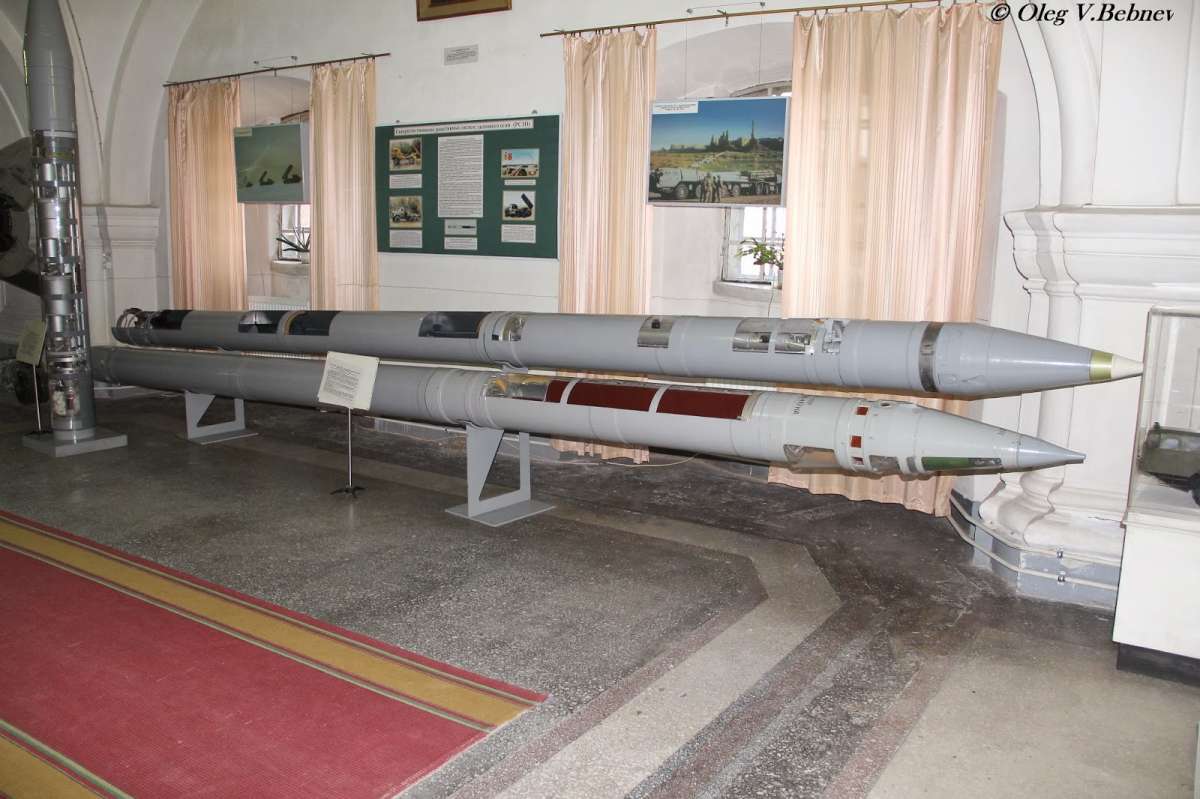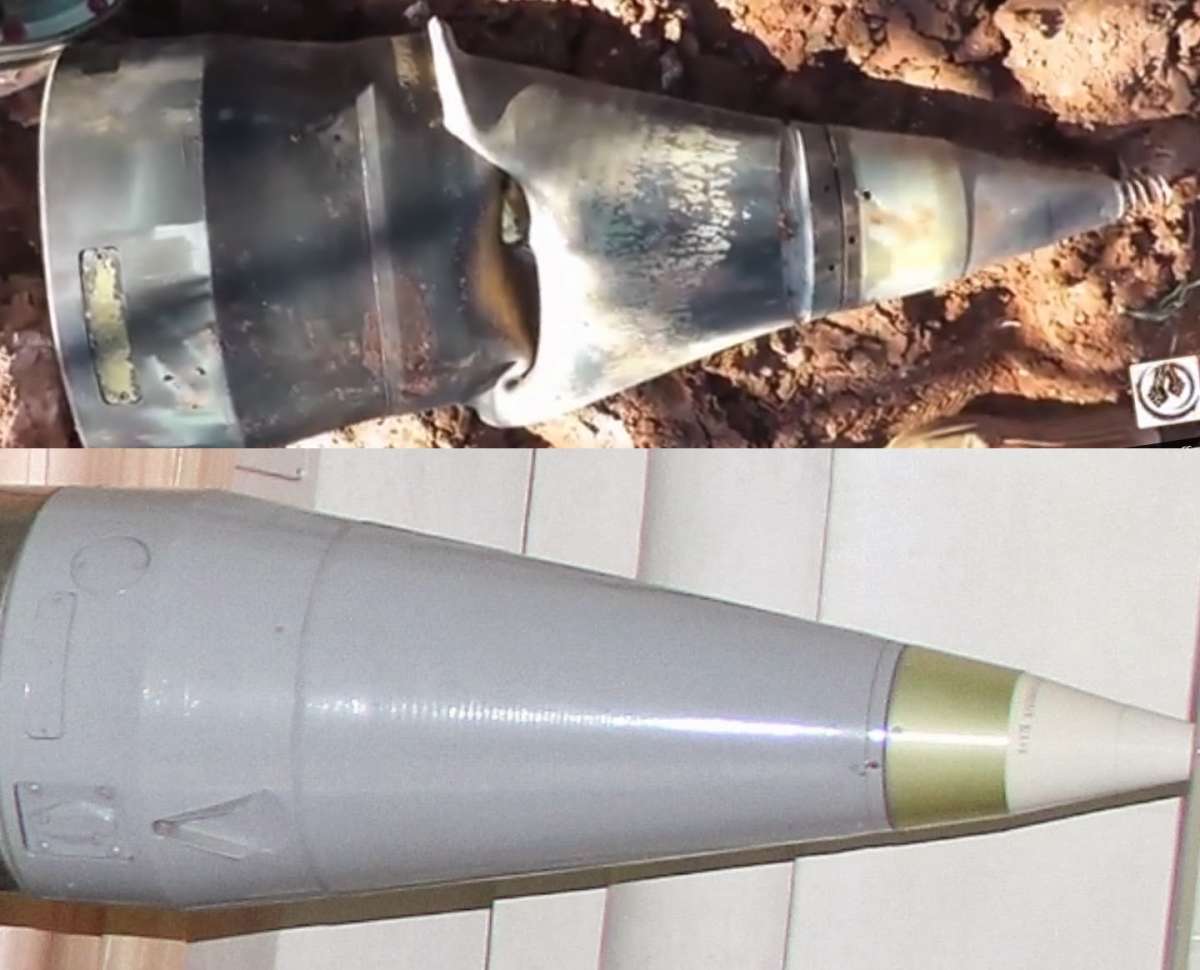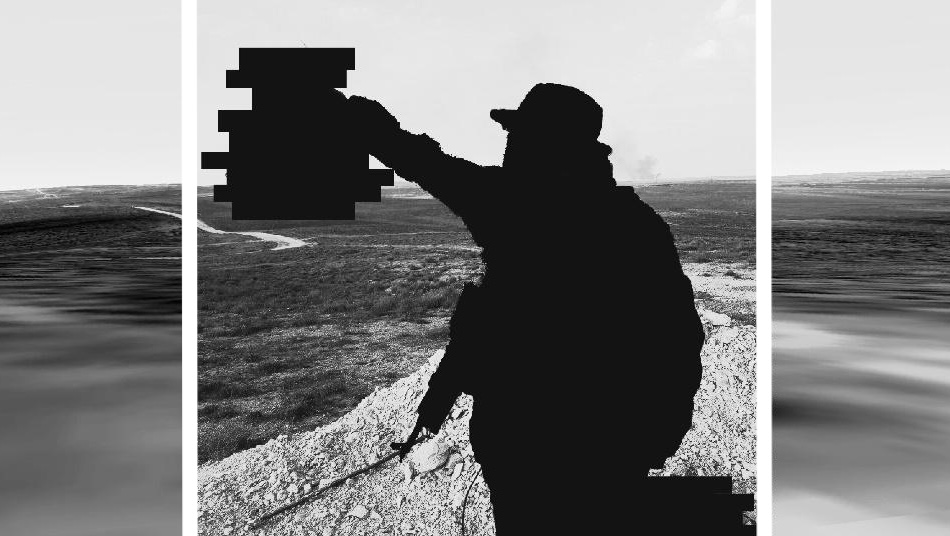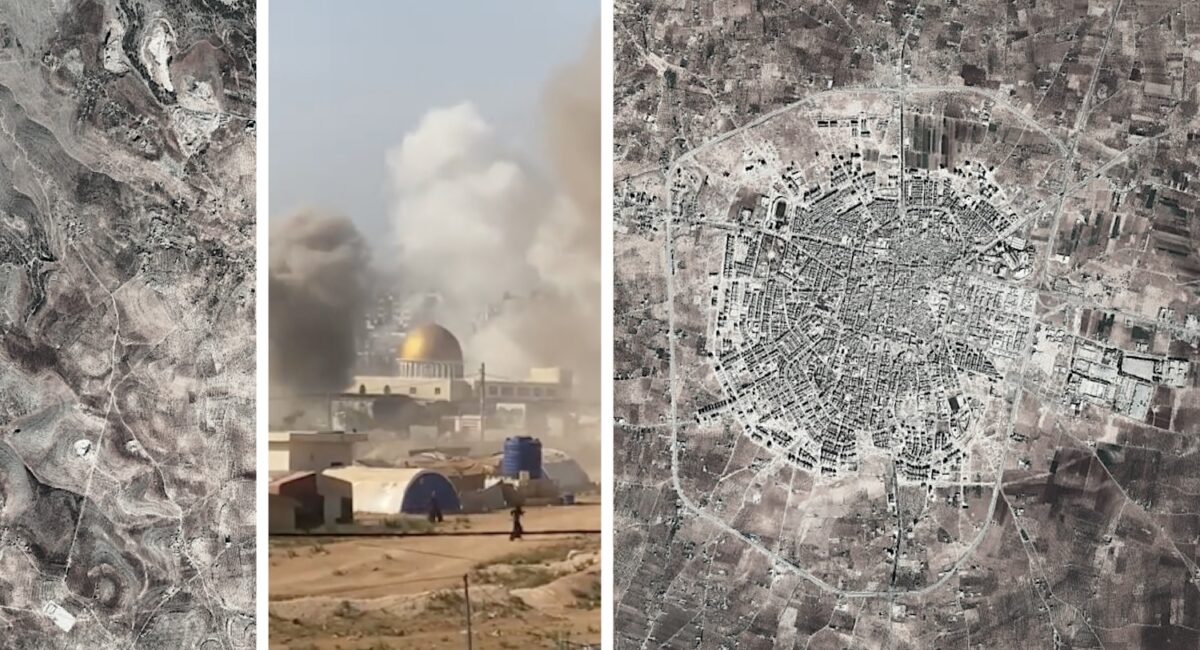Arms Identification With Wikipedia, Holiday Photographs, and Shoe Size Conversion Charts
When it comes to open source investigations there are many resources available to assist in all kinds of ways. Some are obvious, but some are less obvious, and can play a key role in investigations. In this example from Syria, we’ll take a look at using some of the more unusual resources available to an open source investigator.
On February 12th 2014, the following video from Kafr Zita, Syria was uploaded to YouTube, showing what was claimed to be the remains of a cluster munition
It showed the remains of a munition that previously hadn’t been documented in the conflict, and it was claimed to be a type of cluster munition, but the question was, what type?
The entire munition wasn’t visible in one frame, and what appeared to be the nose cone of the munition had become separated from the rest of the munition. Using Paint.NET, free but reasonably powerful picture editing software, I took two frames from the video, and rotated them to create the following basic composite image of the munitions remains
Based on the shape and visible remains, it appeared this was some type of rocket or missile, so I wanted to find a list of rockets and missiles used by the Syrian military in the hope of finding a match. Many of the world’s armed forces have much of their equipment listed on dedicated pages on Wikipedia, including the Syrian army, so I took at look at the munitions listed
One thing each entry for these missiles and rockets listed was the width of the munition, from 107mm to nearly a meter wide. If I had an idea how wide the munition in the video was then I could narrow down my search
The above still was the key to finding out the width of the munition. Because it was filmed straight on, it was possible to use the shoe visible in the top left of the picture to measure the munition. First, I cut out the shoe, and rotated it
But all we can tell from the above is the shoe is slightly shorter than the diameter of the munition, and how can we find out how long a shoe could be? There’s actually online conversion websites that include shoe size conversion charts, and using those it was possible to get a rough idea of the size of the shoe in the visible. I had to look at the smallest and largest reasonable size for a man’s foot, which gave me a rough range of possible sizes
So based on that it seemed the foot would be roughly 23-28cm long, and the munition was a little wider than that. Next, I looked at Wikipedia for the diameter of missiles and rockets used by the Syrian military.
The problem was, those rockets and missiles listed on the Wikipedia page that were possible matches, for example the Fajr-5 shown above, didn’t have a type with cluster munitions. So next, I had to look at other possible systems, and I decided to start with the BM series of multiple rocket launchers, some of which were listed as in service with the Syrian military. The BM-27 Uragan was the most recent version listed on the Wikipedia page, so I took a look at the more recent model, the BM-30 Smerch. Two things stood out about the Smerch’s rockets, the diameter of the rockets, 300mm, and the three types of cluster rockets it can fire, 9M55K, 9M55K1, and 9M55K4.
Now I had a possible match, I needed to find reference images for the BM-30’s rockets, so I began by searching Google for references to the three types of cluster rockets used by the BM-30. I made sure to search for the rockets in Cyrillic, with Google Translate offering an option to convert English text to Cyrillic
Many of the reference images I found were too small to make out the fine details I needed, but one set of images showed all the small details I needed to make a match. This wasn’t from a military manual, but holiday photographs from a tourist in a Russian military museum
The original copies of these photographs had a very high resolution, so I was able to see the smallest details, and match them to the video. Some examples are shown below
Based on that it was possible to match the reference images of the BM-30’s rockets to those remains visible in the photograph, confirming the rockets was a cluster munition, and a type that had previously not been known to be in the possession of the Syrian military.















